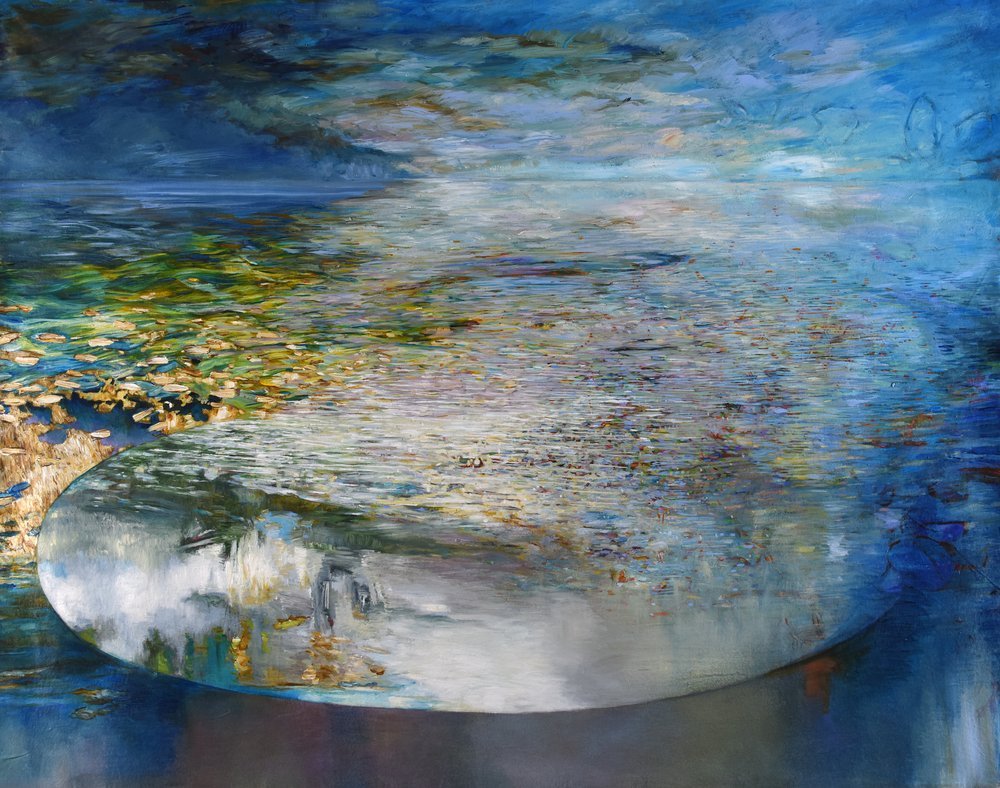
Finding Frames
“New thoughts came,
with all the surety of change in the seasons,
in a gathering together of signs.”
-Karl Deisseroth
Frames are script writers and storytellers — conductors of sensory input that orchestrate stories about ourselves, the world, and our relationship to its active unfolding. As scriptwriters, they have a point of view — and their way of seeing the world is rooted in an origin story.
This origin story begins with beliefs — about self, others, and world — which are shaped by our cultural encoding, the architecture of our egos, and experiences accumulated along life’s path. These beliefs are accompanied by stories — narrative commentary about the active unfolding within and outside us — giving rise to the formation of perspective. These beliefs carry a charge we can feel — possessing a wavelength and frequency that mold the edges, shape, and contour of the lens we see through — influencing the degree light is refracted and allowed to pass through.
Frames clarify and distort our vision. They represent our worldviews in the moment — and across time. A concerto of inner voices that possess their own belief systems — and speak in commonalities and contradictions — give form to everything we feel, think, and experience internally. This symphony orchestra of inner voices forms an instrumental ensemble that speaks to us through thought and feeling — collaborating in unison towards a common goal.
But voices within us can be opposed — forces at odds that speak in the language of contradictions.
Communication within us breaks down. We yearn, yet hate and resent. How do we collaborate with these conflicting characters? An inner conflict, categorized by contradiction, is an indication that a fight over the role of main character is ensuing center stage. Where does this inner conflict begin, how does it progress, and where does it end?
Inner conflicts begin with a change in seasons — bringing to bear new voices into our inner atmosphere — and a mass immigration of new thoughts and feelings that passes through our borders. A new inner culture is emerging. As this story progresses, an inner conflict ensues — a signal from within that we must negotiate a cease-fire — and come to terms.
These inner conflicts can give rise to the formation of perspectives that are not grounded in what is real, concrete, or reasonable. Inside the minds of human beings, stories about self, others, and world begin to auto generate — sometimes, telling contradictory tales rooted in fiction and fantasy. We have lost our frame of reference, and sense of perspective. How do we regain control?
Resolving inner conflict begins with constructing new beliefs — which requires looking into the minds of human beings, where the internal scene gathers form — and is set by competing scriptwriters fighting over the role of main character. A push-and-pull dynamic creates a battle between contradictory voices. This inner landscape, categorized by internal conflict, is by definition, unsustainable ground to traverse. Settlement must be negotiated to encourage a ceasefire. This means a new script writer must be given permission to enter the spotlight — and willed into being by conscious will and effort. These new voices, when accepted into the role of main character, allow new perspectives to be institutionalized into our inner culture — where new norms of feeling and thought are allowed to assimilate into our inner logic.
Deeply institutionalized inner cultures are difficult to change — and require a powerful minority to amass and gather form. In this way, for inner cultures to change, an inner protest must ensue that drives the views of the unpopular majority into the periphery — and allows the dispersal of its psychological energy. The voice of this powerful minority must be carefully constructed in the firelit halls of the human being — because once it gathers momentum, a new inner constitution is institutionalized — and new clusters of thought and behavior become integrated into our way of being.
This is a story about the nature of perspectives — how they are constructed, broken down, and rebuilt — and ultimately, found. They are constructed by beliefs, broken down by experience, and rebuilt through conscious will and effort.
References
Deisseroth, K. (2021). Projections: A Story of Human Emotions. Random House
Kahneman, D. (2011). Thinking, Fast and Slow. Farrar, Straus and Giroux
Kross, E. (2021). Chatter: The Voice Inside Our Head, Why it Matters, and How to Harness It. Crown
Rubin, R. (2023). The Creative Act: A Way of Being. Penguin Press